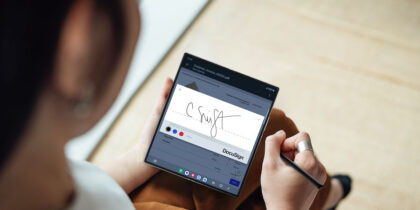To better navigate an increasingly competitive and experience-driven market, financial services companies seek to stand out by investing in their most valuable asset — their people. Employees foster organizational culture, forge lasting customer relationships and navigate the challenges of delivering modern financial services products. Their success drives business growth and fuels competitive advantage.
However, banking and insurance companies face important workforce-related challenges. Competition for employees is expected to grow. According to the U.S. Chamber of Commerce, over the next 15 years, 50% of the insurance workforce is forecasted to reach retirement age. In banking, employee retention is a significant challenge given the industry’s reputation for high-pressure environments and long hours. Frontline employees -– those in customer-facing roles such as branch tellers and contact center agents — are especially struggling with stress and burnout. According to Gartner, Inc., nearly 30% say they are actively looking for roles in other firms and nearly 40% say they are working too hard. To address these workforce challenges, financial services firms are expanding their efforts to empower, support and retain employees with innovative new programs focused on promoting employee wellness.
A holistic approach to employee wellness
While fitness and nutrition are often the first things people think about when they hear the term “wellness,” forward-thinking companies are taking a more holistic look at the overall employee experience. Amidst growing awareness around mental health and the developing understanding of the relationship between employee well-being and workplace success, companies are finding new ways to support their teams.
As part of this effort, financial services companies are reexamining how they can use technology to streamline the delivery of wellness programs, increase employee engagement, and measure impact. Some examples of technology-focused wellness initiatives include fitness gamification, support for flexible working arrangements, and the growing adoption of assisted intelligence (AI) tools to enhance the workday experience.
Fitness gamification sparks interest in wearables
Fitness gamification continues to be a popular method for encouraging increased physical activity among staff. For example, team step count competitions promote participation and foster camaraderie. Individual challenges, especially those tied to rewards and incentives, are also popular among employees.

To ensure these fitness-centered activities are inclusive, many companies provide employees with wearables, such as smartwatches, fitness rings and other fitness trackers. These devices help them monitor their progress, participate in challenges and connect with colleagues for further motivation and encouragement.
Providing employees with wearables has advantages beyond step-tracking competitions. According to Deloitte’s Connected Consumer Survey 2023, 69% percent of those who own smartwatches and fitness trackers say the devices improve their fitness, and 64% say they improve their health. Wearables empower employees to take charge of their health both at work and at home by helping them track physical activity, sleep patterns and cardiovascular fitness, as well as gain an understanding of how these factors combine to impact their physical and mental readiness.
Support flexible work arrangements with advanced mobility solutions
Today’s workers are no longer bound to their desks and can do great work in or out of the office. They want convenience, comfort and the ability to support customers effectively in the field. Efforts to provide flexible working arrangements and enhance mobile fieldwork can promote work-life balance, reduce stress and foster a positive work environment. Advanced mobility solutions mobilize the workforce while fostering collaboration, productivity and positive outcomes for the business and its employees. Today’s enterprise mobility solutions provide the tools necessary to power remote work while also managing risk and meeting the compliance requirements of the highly regulated financial services environment.
Productivity-enhancing technologies enhance employee satisfaction
Rapid advancements in technology, including the development of assisted intelligence (AI) capabilities, are poised to have a profound impact on the way work gets done. According to McKinsey & Company, they have the potential to automate work activities that absorb 60% to 70% of employees’ time today. For example, today’s mobile devices can include on-device, intelligent assistance tools that help streamline time-consuming administrative tasks like web research, transcribing notes and creating meeting summaries. By reducing time spent on these types of tedious activities, employees can focus both their time and energy on more productive, collaborative and creative tasks while maintaining a positive work-life balance that supports their overall well-being.
As more banking and insurance firms explore ways to empower their workforces to thrive in today’s modern financial service landscape, corporate wellness programs are expected to grow more holistic and expansive. Advanced mobile technology solutions will be essential in helping corporate wellness initiatives become more practical, engaging, measurable and inclusive to positively impact employees and the business.
Would you like to learn more about how Samsung can help you with your corporate wellness initiatives? Contact one of our team members today.








